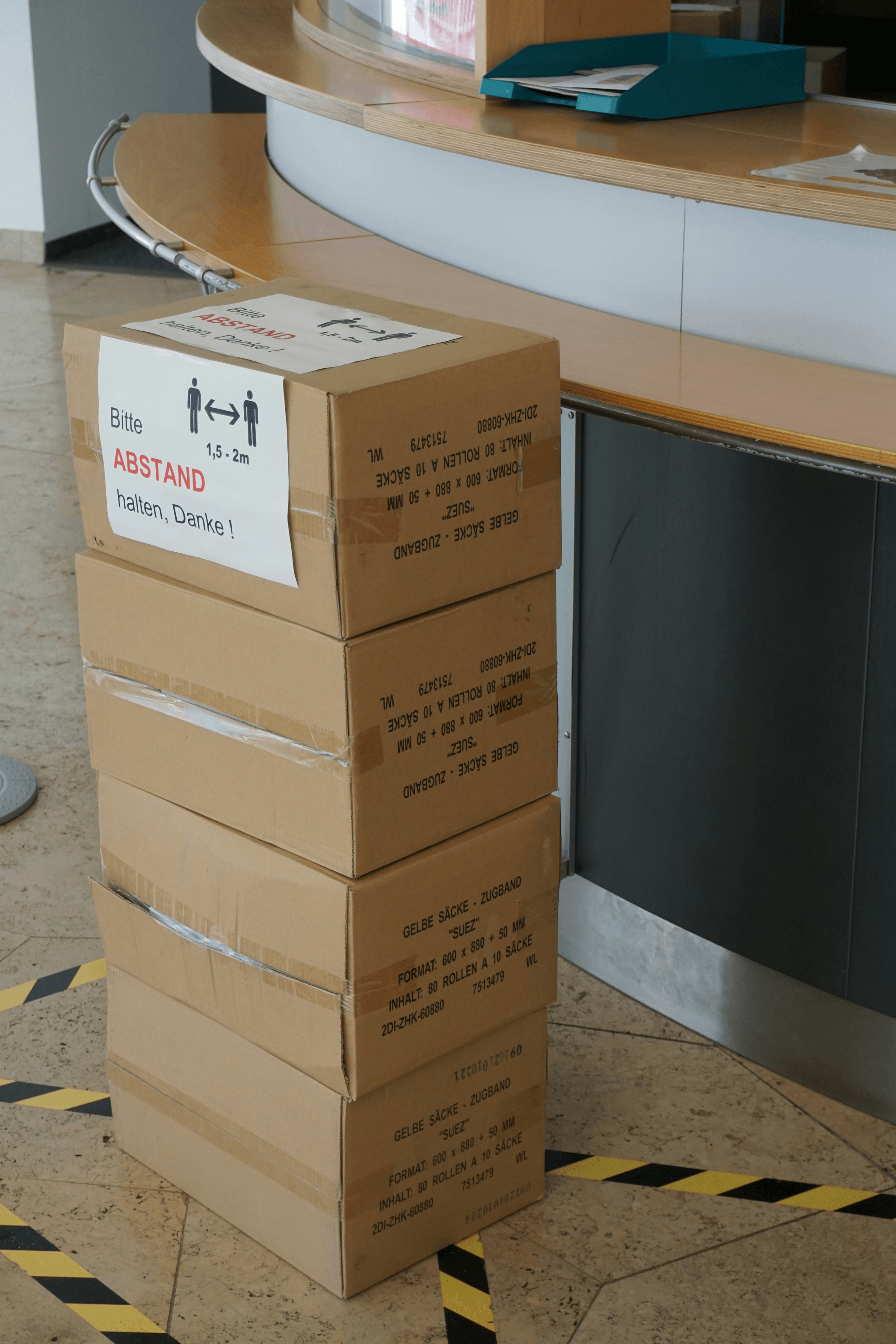Introduction
In the world of shipping, understanding the distinction between gross and net weight is crucial for ensuring smooth operations and cost efficiency. Gross vs net weight for shipping isn’t just a matter of semantics; it directly affects pricing, compliance, and logistics management. With the right grasp of these concepts, businesses can optimize their processes and avoid costly mistakes.
Understanding Gross and Net Weight
Gross weight refers to the total weight of a shipment, including all packaging materials, while net weight is the actual weight of the goods alone. This fundamental difference in gross vs net weight for shipping can significantly impact how shipments are calculated and billed. Knowing how to accurately determine both weights can save time and resources during transport.
Importance in the Shipping Industry
The implications of gross vs net weight for shipping extend far beyond just numbers on a scale; they influence shipping costs, regulatory compliance, and even delivery timelines. Accurate measurements ensure that businesses adhere to regulations while minimizing expenses associated with excess weight charges or fines. In an industry where every penny counts, mastering these metrics is essential for maintaining competitiveness.
SSOURCING INC.’s Role in Weight Mastery
At SSOURCING INC., we recognize that understanding gross vs net weight for shipping is key to successful logistics management. Our expertise helps clients navigate this complex landscape by providing insights into best practices for measuring and managing weights effectively. By partnering with us, companies can streamline their operations and enhance overall efficiency in their shipping processes.
What is Gross Weight?

When navigating the intricacies of shipping, understanding gross weight is essential. It’s not just a number on a scale; it represents the total weight of a shipment, including the product and its packaging. This measurement plays a crucial role in logistics, impacting everything from pricing to compliance.
Definition and Calculation
Gross weight refers to the total weight of goods being shipped, encompassing both the product itself and any packaging materials used. To calculate gross weight, simply add the net weight (the actual weight of the product) to the weight of all packaging components—boxes, pallets, and any other materials involved in securing your shipment. For instance, if you have 100 pounds of merchandise packed in a box weighing 10 pounds, your gross weight would be 110 pounds.
Examples of Gross Weight in Shipping
In practical terms, consider a scenario where you're shipping electronics. If you have a laptop that weighs 4 pounds and it’s packed in a box that weighs 2 pounds with additional protective padding weighing another pound, your gross weight would be 7 pounds. Another example could involve shipping bulk items like furniture; if an assembled chair weighs 15 pounds but comes with packaging that adds another 5 pounds, then you're looking at a gross weight of 20 pounds for that shipment. Understanding these figures can help businesses accurately quote shipping costs based on gross vs net weight for shipping.
Common Mistakes to Avoid
One common pitfall when dealing with gross vs net weight for shipping is neglecting to include all packaging materials in your calculations. This oversight can lead to underestimating shipping costs or running afoul of regulatory requirements—nobody wants unexpected fees! Additionally, using inconsistent units (like mixing kilograms and pounds) can create confusion; always stick to one unit system for clarity's sake.
What is Net Weight?

When diving into the world of shipping, understanding net weight is crucial. Net weight refers to the weight of the product itself without any packaging or additional materials. This measurement is essential for accurately determining shipping costs and ensuring compliance with various regulations.
Definition and Calculation
Net weight is calculated by subtracting the tare weight (the weight of the packaging) from the gross weight (the total weight of the product plus its packaging). For example, if a box containing apples weighs 10 pounds in total, but the box itself weighs 2 pounds, then the net weight of the apples would be 8 pounds. Knowing how to calculate net weight helps businesses avoid common pitfalls when assessing shipping costs and ensures they are not overpaying due to inflated weights.
Real-World Applications of Net Weight
In real-world scenarios, net weight plays a significant role in food distribution, pharmaceuticals, and manufacturing industries. For instance, grocery stores often display net weights on product labels to inform consumers about exactly how much food they are purchasing—without any misleading packaging influence. Additionally, in international shipping, accurate net weights are vital for customs declarations and duty calculations; getting this wrong can lead to costly delays or fines.
Key Differences from Gross Weight
The key differences between gross vs net weight for shipping cannot be overstated; while gross weight includes everything—the product plus its packaging—net weight solely accounts for the product itself. This distinction impacts everything from pricing strategies to compliance with legal requirements in different countries. Understanding these differences ensures that businesses like SSOURCING INC. can optimize their logistics strategies effectively while avoiding unnecessary charges that arise from miscalculating weights.
Why Gross vs Net Weight Matters

Understanding the distinction between gross vs net weight for shipping is crucial for anyone in the logistics and transportation industry. These two measurements can significantly influence various aspects of shipping, from costs to compliance with regulations. By grasping the importance of these weights, businesses can optimize their shipping processes and improve overall efficiency.
Impact on Shipping Costs
Shipping costs are often calculated based on weight, making it essential to understand gross vs net weight for shipping. Gross weight includes everything—the product, packaging, and any other materials—while net weight reflects just the product itself. By accurately measuring these weights, businesses can avoid overpaying for shipping services and potentially secure better rates with carriers.
When companies miscalculate their weights or fail to differentiate between gross and net weight for shipping, they may face unexpected fees or delays. For instance, a shipment deemed overweight due to incorrect gross weight calculations could incur additional charges or require costly rerouting. Therefore, mastering these distinctions not only saves money but also helps maintain a smooth supply chain.
Regulatory Compliance Considerations
Regulatory compliance is another area where understanding gross vs net weight for shipping plays a vital role. Different countries have specific regulations regarding maximum allowable weights for shipments, which include both gross and net measurements. Failing to comply with these regulations can lead to fines or even confiscation of goods at customs checkpoints.
Moreover, accurate documentation of both weights is critical when dealing with international shipments; customs authorities often require detailed information about what’s being shipped and its respective weights. SSOURCING INC. emphasizes that neglecting this aspect could lead to severe logistical headaches that no one wants to deal with during an already complicated process!
Ultimately, ensuring that your business adheres to regulatory standards surrounding gross vs net weight can protect you from legal issues while enhancing your credibility in the marketplace.
How Weight Affects Delivery Times
Weight plays a significant role in determining delivery times as well; understanding the nuances between gross vs net weight for shipping can help streamline operations further down the line. Heavier shipments typically take longer to transport due to increased handling time and restrictions on certain modes of transport (like air freight). Conversely, lighter shipments often enjoy faster processing times.
Additionally, if a shipment's total gross weight exceeds carrier limits or requires special handling procedures due to its size or bulkiness, it may be delayed in transit or require an alternative route, both scenarios that negatively impact delivery timelines. SSOURCING INC.’s commitment to helping clients master these distinctions ensures smoother logistics operations while keeping customers happy with timely deliveries.
In conclusion, grasping why distinguishing between gross vs net weight matters allows businesses not only to save money but also to ensure compliance and improve delivery speed—all essential elements in today’s competitive market landscape.
Tools for Measuring Weight Accurately

In the world of shipping, understanding the distinction between gross vs net weight is crucial, and having the right tools to measure these weights accurately can make all the difference. Whether you're a seasoned shipper or just starting, investing in quality weighing equipment and software solutions can streamline your operations and ensure compliance with regulations. Let's dive into some essential tools that will help you master weight measurement.
Recommended Weighing Equipment
When it comes to measuring weight accurately, not all scales are created equal. For shipping purposes, digital scales that provide precise measurements are essential; look for models that can handle varying capacities, from small packages to heavier freight loads. Additionally, consider portable scales for on-the-go measurements as well as floor scales for larger shipments—both options play a vital role in differentiating between gross vs net weight for shipping.
Another important factor is calibration; regular calibration of your weighing equipment ensures consistent accuracy over time. Investing in high-quality load cells can also enhance reliability and performance across different types of shipments. Remember, accurate measurement not only saves money but also helps avoid costly mistakes when determining gross vs net weight for shipping.
Software Solutions for Weight Management
In today's tech-savvy world, software solutions have become indispensable tools for managing weights efficiently. These programs often integrate with existing logistics or inventory management systems to provide real-time data on both gross and net weights during the shipping process. By automating calculations and tracking weights digitally, businesses can minimize human error associated with manual entry.
Moreover, many software solutions come equipped with features that allow users to generate reports on shipping metrics—including costs associated with gross vs net weight for shipping—making it easier to analyze trends over time. With customizable dashboards and alerts, you’ll always be informed about your shipments' status and any discrepancies in weight measurements before they escalate into bigger issues.
SSOURCING INC.’s Top Picks
At SSOURCING INC., we believe in equipping our clients with only the best tools available in the market to enhance their shipping processes effectively. Our top picks include robust digital scales known for their durability and precision—perfectly suited for measuring both gross vs net weight for shipping needs across various industries.
We also recommend advanced software like ShipWeight Pro; this solution allows users to seamlessly manage their shipment data while providing insights into cost-saving opportunities related to weight management practices. By choosing SSOURCING INC.'s recommended tools and solutions, you're setting yourself up for success in mastering the complexities of gross vs net weight within your logistics operations.
Streamlining Shipping Processes

In the shipping industry, understanding how to streamline processes can significantly impact efficiency and cost-effectiveness. One of the key aspects to consider is the interplay between gross vs net weight for shipping. By optimizing packaging, reducing costs, and leveraging technology, businesses can enhance their shipping operations while ensuring compliance with weight regulations.
Optimizing Packaging Based on Weight
When it comes to packaging, every ounce counts—especially when you're dealing with gross vs net weight for shipping. The goal should be to minimize unnecessary bulk and weight while still protecting your products during transit. This not only helps in reducing costs associated with shipping but also ensures that you maximize your load capacity, allowing more items per shipment.
Choosing lightweight materials without compromising on durability is essential in this optimization process. For instance, using corrugated boxes instead of heavier wooden crates can substantially lower your gross weight without affecting the safety of your goods. SSOURCING INC. recommends regularly reviewing packaging options and adjusting them based on current shipping rates and regulations related to gross vs net weight for shipping.
Tips for Reducing Shipping Costs
Reducing shipping costs is a priority for any business looking to maintain a competitive edge in today's market. Understanding the differences between gross vs net weight for shipping plays a crucial role in this endeavor; knowing how each affects pricing allows you to make informed decisions when planning shipments. Here are some practical tips:
First, consolidate shipments whenever possible; combining multiple orders into one shipment can significantly reduce overall costs by maximizing space and minimizing fees tied to individual packages' weights. Second, consider negotiating rates with carriers based on your consistent volume or exploring flat-rate options that may offer savings despite higher gross weights. Lastly, always keep an eye on seasonal changes or promotions offered by carriers that could help further cut down expenses.
Leveraging Technology for Efficiency
In today's digital age, leveraging technology is essential for streamlining processes in any industry—including shipping! Software solutions focused on managing gross vs net weight for shipping can help automate calculations and track shipments more efficiently than ever before. SSOURCING INC.'s top picks include platforms that integrate seamlessly with existing systems while providing real-time data analytics.
Additionally, utilizing barcode scanning technology ensures accurate weights are recorded at every stage of the delivery process—from warehouse management through final delivery—reducing human error significantly. By investing in these technological advancements, companies not only save time but also improve accuracy when dealing with complex logistics involving gross vs net weight for shipping.
Conclusion

In the intricate world of shipping, understanding the nuances between gross and net weight is not just beneficial—it's essential. Mastering weight terminology can significantly impact your logistics operations, ensuring that you avoid costly mistakes and streamline your processes. With a firm grasp on gross vs net weight for shipping, you can navigate the complexities of freight more confidently.
Mastering Weight Terminology
When it comes to shipping, clarity is key. Knowing the difference between gross and net weight empowers businesses to make informed decisions that affect their bottom line. By mastering these terms, companies can ensure compliance with regulations and optimize their shipping strategies effectively.
Enhancing Shipping Efficiency
Efficiency in shipping goes hand-in-hand with accurate weight measurements. Understanding gross vs net weight for shipping allows businesses to plan better packaging solutions and reduce unnecessary costs associated with excess weight. By enhancing efficiency through careful consideration of these weights, companies can improve delivery times and customer satisfaction.
Choosing SSOURCING INC. for Expertise
In a market where every detail counts, SSOURCING INC. stands out as a trusted partner in navigating the complexities of shipping logistics. Our expertise in understanding gross vs net weight for shipping ensures that you have all the tools necessary to succeed in today’s competitive environment. When you choose SSOURCING INC., you're not just selecting a service provider; you're investing in a partner dedicated to optimizing your operations.

